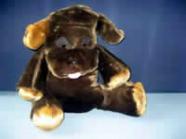Local museum unit
Queen Margaret College's Barbara Knight worked with the Museum of Wellington City & Sea on a project in which students created a conceptual design for a prototype souvenir for the museum's gift shop.
In this project, Barbara aimed to target the 2.1 achievement standard and clarify many of the ideas and terminology within that.
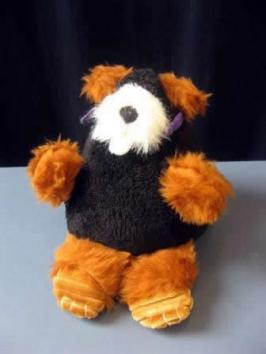
Dog/toy souvenir.
"I really wanted students to understand what conceptual design was because it's always a bit of a blurry line for them between a prototype and a finished outcome. And while the product they made was finished to a quality standard, the context was about creating a prototype of a potential souvenir that could be sold in the shop," Barbara says.
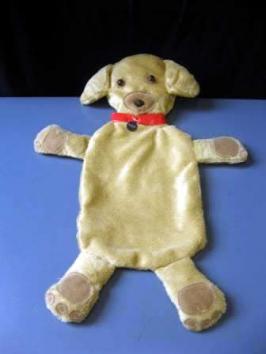
Puppy souvenir.
"That meant understanding that, if manufactured, it would be taken to a refinement process, but we weren't going to take it that far. So, the whole focus for the students was about selling their product and making the client want to buy it as a potential souvenir for mass manufacture."
"Developing this unit wasn't too difficult because I already had all the resources from Te Papa to use. But this time I really wanted to lift it up from Kiwiana – kiwifruit cushions and that sort of thing. The Museum of Wellington has very different themes – Māori culture and maritime and social history – and students would be asked to link their work to the museum's exhibits. That was the big design challenge."
Before committing herself to the project, Barbara visited the Museum of Wellington City & Sea to ensure it would be the right fit for the class and the unit she had in mind.
"I had a look around then made contact with their education officer and told him what we wanted to do. I also showed him some examples from another project, and he thought it was really interesting. I got the retail manager involved as well and it was great for her to do something different too. We then set some outcomes and planned how we would do a half-day visit with the class."
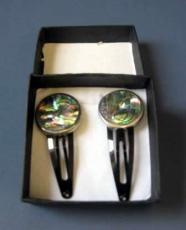
Hair clips - souvenir.
Once Barbara was sure that the museum was a viable client and were willing to commit themselves to the length of the project, she introduced the topic to the students.
The class then started developing a context – Barbara had her students conduct independent research on the museum and opened a class discussion on the properties of a good souvenir to prepare them for the day out.
For the museum trip, Barbara divided the class into two groups with one group talking with the retail manager in the shop and the other with the education officer in the museum before switching over.
"The retail manager talked about laws and ethics, what you can and can't sell, what sells best and why, and what a potential product should look like. Then the education officer took students around the museum and talked about the different exhibits and themes within it."
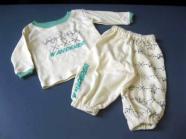
Baby clothes.
After lunch, the students were then given free rein with digital cameras, taking photos of exhibits that they were interested in developing into a design concept. The day finished with a meeting where the class and museum staff discussed what they had seen and determined some key specifications for potential products.
"The museum staff talked about key themes they would like to see designed and about who their main visitors were," Barbara says. "But in the end it was still up to the students and they identified some potential markets – for instance there was hardly anything in the shop specifically for men or children."
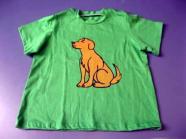
T-shirt souvenir.
Back at school the students began focussing on their individual concepts, selecting their target audience, themes, and product ideas and creating design work before meeting with the education officer several weeks into the project for scheduled consultations.
"The education officer gave feedback on the design, the themes, whether it suited the social history of the museum, and whether it was relevant or not, while the retail manager was able to tell them whether their product would sell and whether it had shelf quality and visual appeal," Barbara says.
To give as realistic an experience of industry as possible, Barbara put the responsibility for these meetings in the hands of each student. "We set it up as business meetings. Students were each allocated a ten-minute time slot – they had to have their questions planned out and turn up on time with all the stuff they wanted to get feedback on."
The students used this feedback to finalise their design concepts, then began the construction phase of their prototypes, producing a range of different options to suit the various themes of the museum and its customers.
One theme in particular provided a wealth of inspiration says Barbara. "The museum has a very cool exhibit based on a famous dog called Paddy the Wanderer who was around in the 1930s. The girls really loved his story and developed children's items around it. Part of the client specifications was to consider packaging and labelling, and one girl made a really cool dog coat and a little storybook about the real Paddy the Wanderer. This was totally appropriate and the museum staff approved of that design and said, 'That would be great, we don't have anything like that'."

T-shirt souvenir.
Other prototypes included huge dog bean bags, high quality jewellery, and baby clothes with a pirate theme, all of which received positive responses from the museum staff.
With the unit completed, Barbara can see big advantages in this project for future classes and for other schools, particularly in the relationship built with a local museum. "It's a project that other schools could use – not everyone can have access to Te Papa but most towns have got some kind of museum."
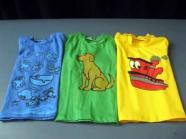
T-shirts/souvenirs.
The project also has obvious advantages for student enjoyment and ownership. "Students enjoyed the freedom of choice in themes and product, and that they could make whatever they wanted – especially in Materials Technology which is usually predominantly clothing," Barbara says. "And they really stepped up to the mark because they weren't making it for just mum and dad."
Barbara has continued the unit, and the relationship with the Museum of Wellington. This year she has introduced a "treasure hunter" concept that will encourage the girls to look for and focus on stories and themes from the museum that are less obvious or well known.

